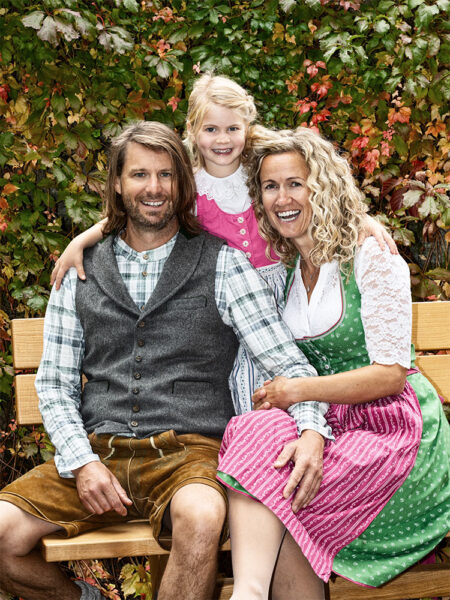The Stieglschuster
The Landhaus Stieglschuster tells an eventful story that has been shaped by the challenges of the past to this day and now shines as an inviting place of relaxation and hospitality..


The penultimate house on the right-hand side of the street, formerly known as the “Stieglschuster”, was built in 1750 and was part of the Friedstein estate until 1848. In 1752, Georg Millner acquired the cobbler’s house and workshop, which was then known as the “Stelzer Herberg”. After Georg’s death in 1795, his son Peter took over the property, whose inventory listed, among other things, “6 cows, 1 bull, a 15-year-old mare, 2 pigs, 5 needles and 150 pairs of cobbler’s lasts”.
In 1830, the house went to Paul Müllner, Peter’s son, who was married to Johanna Stenitzer from Irdning. In 1834 Johanna became co-owner and in 1868 her son Paul inherited the property. He was married to Cäcilia Hinterschweiger from Irdning (later known as Beichtbuchner). After Paul Müllner drowned in the Irdning fire-fighting pond in 1875, the entire estate passed to Cäcilia. A year later she married Andreas Opeck, who worked for the peat cutters in Liezen. Andreas received half of the property in 1878, but the marriage remained childless as the children from Cäcilia’s first marriage had already died.
After Cäcilia’s death in 1913, Andreas handed over the property to Johann and Maria Seebacher in the form of a life annuity. During this time, the name “Stieglschuster” came about because a path (Steig) to Raumberg passed in front of the house and it was an old cobbler’s house. In 1980, the path was removed and the name was shortened – but the original Vulgo name was retained. Many Vulgo names from that time refer to the house and not to the owners.
Johann Seebacher was drafted during the First World War and died in 1915 in a military hospital in Hungary. His widow Maria was now left alone with three small children and the care of the life-long pensioner Opeck. Her parents and in-laws supported her during the difficult war and post-war years. Later, Maria remarried, this time to Florian Danklmeier, son of Elisabeth Danklmeier from Raumberg. In 1923, Florian became a co-owner and initially worked in the Peer sawmill, then in the cardboard lid factory and finally at the forestry administration in Donnersbach, which meant a ten-kilometre daily walk.
After Florian’s death in 1953, his youngest daughter Franziska took over the property and married Albin Deutschmann in 1960. In 2000, the house passed to their son Albin, and in 2007 Marion Wimmer bought the property.
Franziska Deutschmann considered the preservation of history to be important, which is why the Vulgo name “Stieglschuster” was transferred to the new Deutschmann building, house number 138, which is now known as the Landhaus Stieglschuster.

Family Schreilechner

Sources: Maria Deutschmann and photos: Maria Deutschmann
History of the municipality of Altirdning and its houses by Lieselotte Jontes & Rudfolf Pfusterer Irdning 2009



